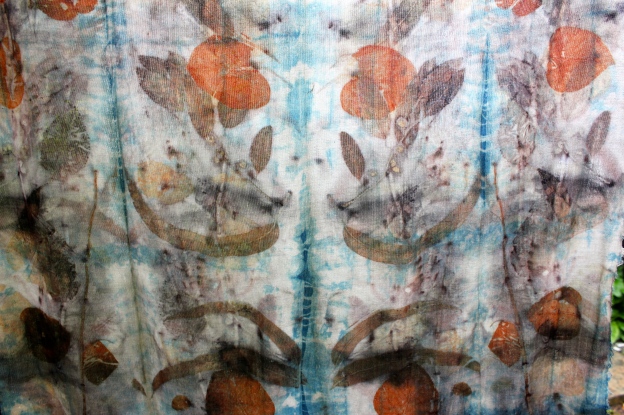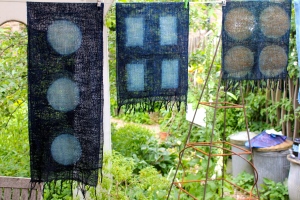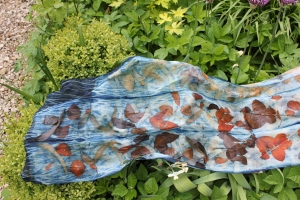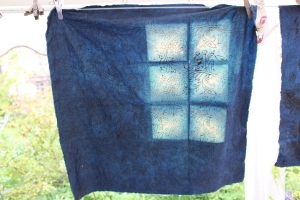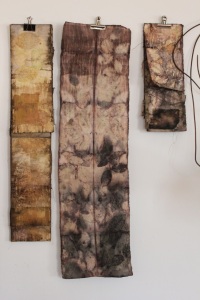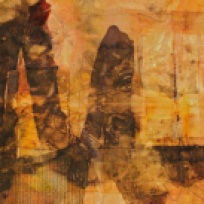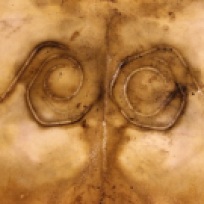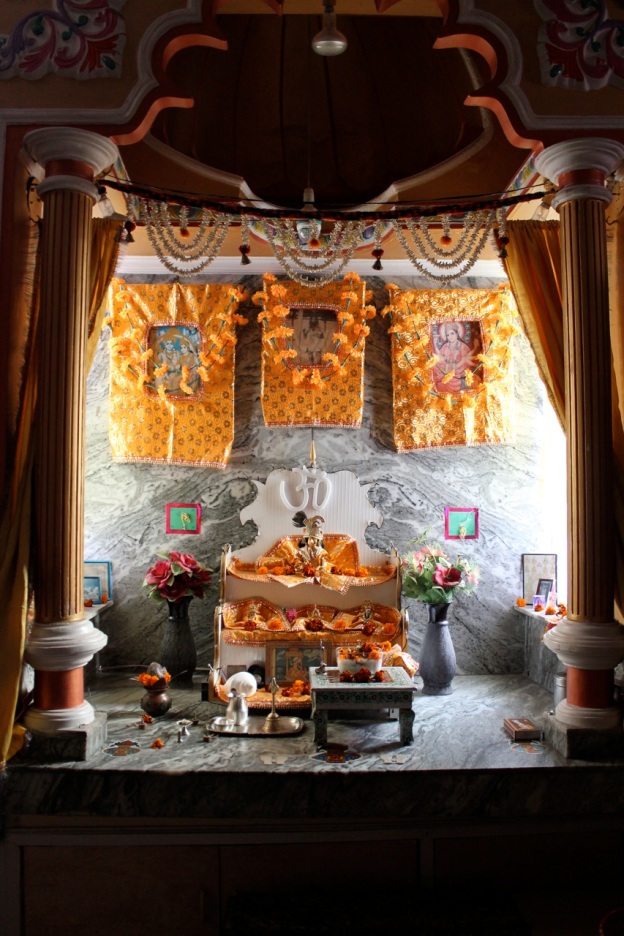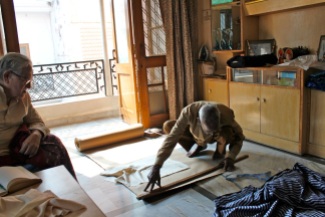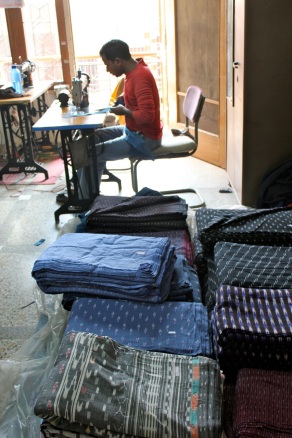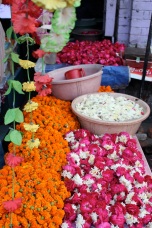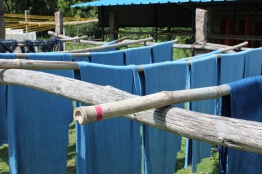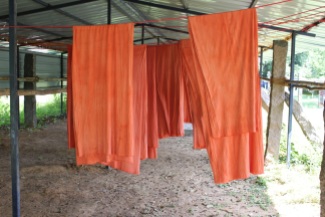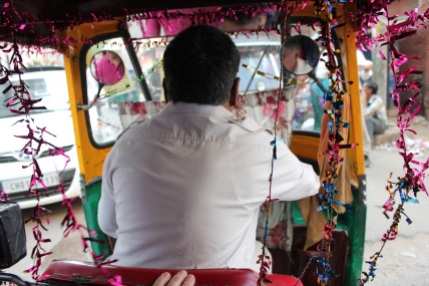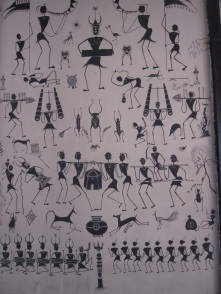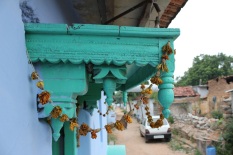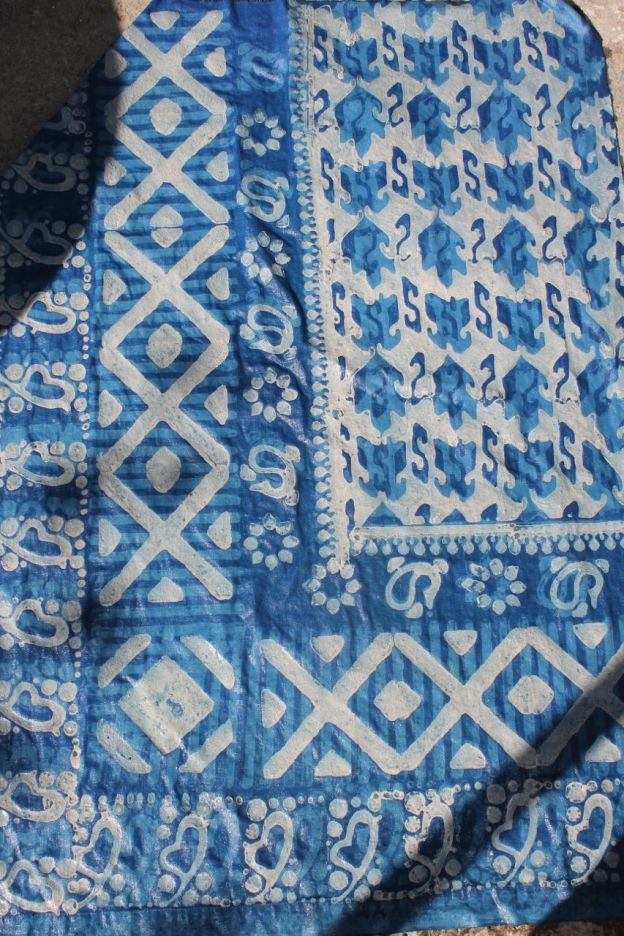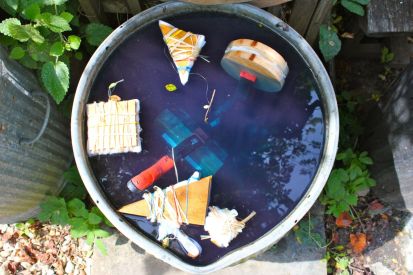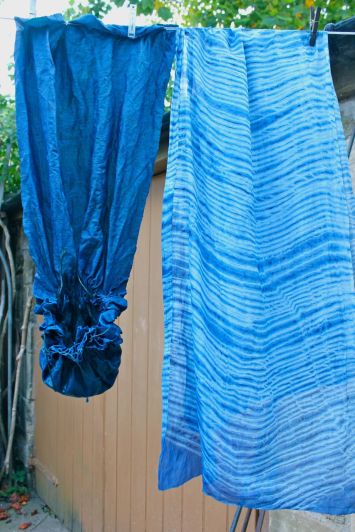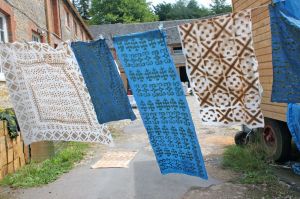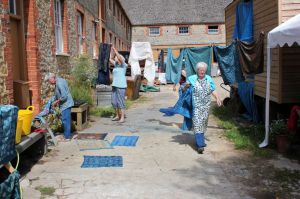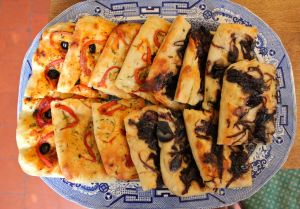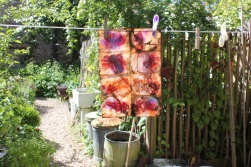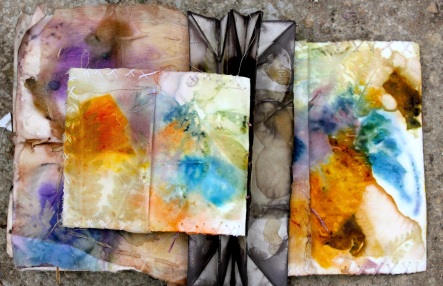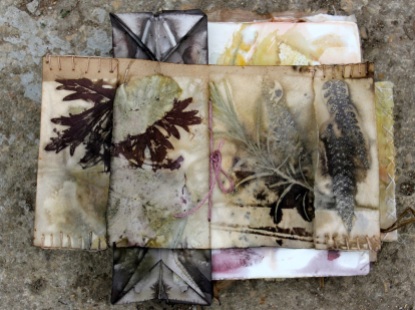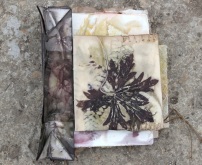Thanks to the discovery of the Eucalyptus eco-print by India Flint, many textile enthusiasts around the world have fallen in love with the wonderful prints achieved from the leaves of these trees. It seems however, that many believe we can’t grow the varieties useful for contact printing and dyeing in colder climates. It is also a widely held view that those that will cope with our winters will become a menace, quickly growing to enormous heights while stripping nutrients from the soil.
My groups of dyers really enjoy contact printing and dyeing with native plants and trees. However, there is something magical about the colour and fastness of eucalyptus on wool that makes it so special and so many buy leaves from florists to achieve the wonderful burnt orange prints and long to have a free and ready supply.
Claire, one of the group, brought an article about Kangaroot Trees for us to look at (October 2015’s, The Garden). We got quite excited at the possibility of growing a eucalyptus or two as dye plants. However, we first needed to find out which would give us good contact prints as well as cope with various growing conditions, survive our winters and not outgrow our gardens. After reading the article and looking at the website, we realised, this Worcestershire nursery, stocks more than 50 species of hardy Eucalyptus. The owner, Hilary Collins, very kindly agreed to send us samples of six varieties. We chose the following based on their varied leaf shapes, small to medium growing size (can be container grown) and hardiness.
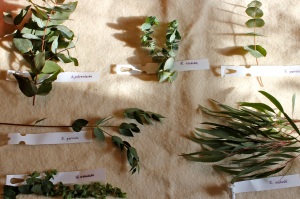
At our next meeting we bundled samples of each between pieces of silk and wool, sprayed with a little vinegar and water and then steamed the bundles for an hour. Five of the six were juvenile leaves except the leaves of the E. pulverulenta, Baby blue which were adult.

The results of all the samples were excellent. All varieties produced good colour, though the unusual small leaved species E. crenulata produced greenish leaf prints with red stems, a lovely delicate combination. According to the catalogue this variety is hardy to -10, is tolerant of poor drainage and also has beautiful perfumed flowers.

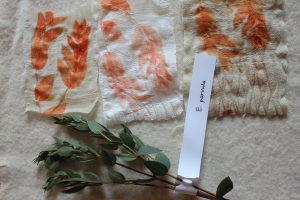
E. parvula or Small leaved Gum has nicely shaped pointed leaves, good colour, can be coppiced, is hardy to -20 and can cope with alkaline soils. This was a real favourite and one on my short list. This variety seems to be the most robust and adaptable of all the varieties we sampled.

E. cinerea or commonly know as Silver dollar has rounded leaves, a real favourite with florists, gives good colour and is hardy to -8 to -13. My sister keeps me supplied with foliage from her tree in London. It is a good variety though not as hardy as some.

E. nicholii or Narrow leaved Black Peppermint has lovely feathery foliage and is hardy to -15. It produced good prints contrasting well with the more rounded varieties. I think this varietyis probably my favourite.

E. perriniana or Spinning Gum is hardy to -15, gave good colour and interesting prints. The only restriction would be the leaves form around the stem and so would be more difficult to use individually.
We were really happy with our results and are thinking about varieties which would be most suitable for our different gardens. I already have at least two on my wish list, though, with a move on the horizon I may have to wait a little longer!

